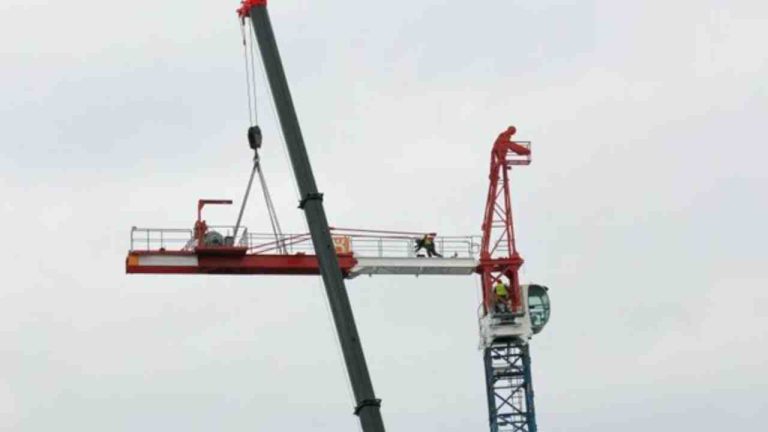Computer vision is transforming our daily experiences. From aiding doctors in pinpointing diseases to streamlining inventory for retailers. Yet, the applications and necessities vary dramatically across sectors. While there are automated solutions that promise quick integration, their one-size-fits-all approach often misses the mark in addressing unique business challenges.
In this piece, we’ll contrast these two approaches. The broad strokes of automated solutions versus the precision of custom-tailored ones. Dive in to discern which might be the ideal fit for different business landscapes. And why customization often takes the lead in delivering real-world impact.

Photo by Andrew Neel on Unsplash
Are Automated Computer Vision Services Better for Businesses Than Customized Ones?
According to a recent report, computer vision in healthcare alone is expected to reach $4.5 billion by 2025. But beyond these staggering numbers, the essence of computer vision technology lies in its diverse applications across multiple sectors. Each industry, be it retail, automotive, or agriculture, has its own unique set of requirements and challenges. As such, there’s no singular computer vision solution that fits all.
Diving deeper into the options of automated solutions, we witness the allure of their offerings. The plug-and-play convenience of these systems is undeniable. They’re ready-to-use and require minimal setup. Moreover, their lower upfront costs make them a favored choice. Especially for businesses keeping a keen eye on their budgets. These solutions also come equipped with standard features, serving as general tools that can cater to a wide spectrum of needs.
Yet, it’s essential to realize where these solutions truly come into their own. For businesses new to computer vision, automated solutions might be a good start. Companies with basic needs often find these solutions fit well due to their standard features.
Nevertheless, as enticing as automated solutions might be, they come with their fair share of drawbacks:
- Inflexibility. They are not the best for adapting to unique business needs.
- Security concerns. Can cause potential vulnerabilities in widely-used systems.
- Scaling issues. It’s difficult to accommodate the growth of businesses with niche requirements.
- Not quite the right fit. A general solution might not align perfectly with specific business models.
Therefore, while automated solutions might appear as a convenient choice initially, they aren’t the be-all and end-all. This is where you can consider implementing customized computer vision services. Tailored to meet the intricate demands of a business, these solutions can offer a precise fit, making them invaluable in the long run.
The Potential of Custom Computer Vision Solutions
Diving into custom computer vision solutions reveals their profound influence on businesses. Their strength lies not just in functionality, but in how they harmonize with a company’s specific goals. Let’s break this down:
- Flexibility & adaptability in computer vision
Custom solutions work the best with businesses that have niche requirements. For instance, a retailer might need a specific algorithm to recognize diverse clothing items in real-time. With customized computer vision, the algorithm can be fine-tuned to detect even the most subtle patterns, colors, or designs.
- Scalability in data processing
As a business grows, so do its data processing needs. A car manufacturer might start with recognizing basic car parts today, but might need to identify minute defects in the future. Custom solutions ensure the computer vision system evolves and scales up to these expanding demands.
- Robust data security
When dealing with computer vision, we often handle sensitive data. Like facial recognition details or confidential blueprints. Custom solutions allow for rigorous, bespoke security protocols, ensuring proprietary data remains uncompromised.
- Creating tailored datasets for efficiency
While implementing computer vision, some businesses frequently require a tailored dataset. For a food delivery app, this might mean recognizing hundreds of dishes, down to the ingredients. This precise recognition can streamline operations, ensuring orders are accurate, leading to happier customers and potential profit growth.
- Client-centric vision to reality
For a healthcare provider detecting rare diseases in X-ray images, a custom solution targets that exact need. This reduces the reliance on human experts to verify automated annotations. The approach saves time, money, and aligns the tech with the provider’s goal, ensuring trustworthy results.
Automated solutions may initially attract businesses. But for long-term success, the benefits of custom solutions warrant serious consideration.
Making the Right Choice for Your Business
Selecting the ideal computer vision solution for your business is a pivotal decision. So, start by assessing your business needs. Do you require a solution for the short term, or are you planning for the next five years? Understanding your long-term vision will provide clearer insight into which direction to lean. Automated solutions might be attractive initially due to their simplicity. But their limitations could become apparent as your business grows.
Prioritizing security is non-negotiable. The data integral to your operations should remain in trusted hands. It’s not just about having a solution, but having one that remains impenetrable against potential threats.
Furthermore, an initial investment might seem steep, but the focus should be on value. Will the solution continually serve your business as it grows and diversifies, delivering a worthwhile return on that initial outlay? Here are the highlights of both options:
Automated computer vision services: Quick entry, general features, potential scalability concerns.
Custom computer vision services: Tailored fit, scalability, enhanced security, and promising long-term ROI.
In conclusion, you should take a moment to gauge your business specific needs, foresee future demands, and make an informed choice. Whether you lean towards automated or custom, ensuring it aligns with your objectives is paramount.
To Sum Up

Photo by Christin Hume on Unsplash
Choosing the right computer vision service for your business is no small feat. With the myriad of options available, it’s important to make choices that fuel your business’s success. As you chart the course for your technological journey, think long-term and strategic.
Focus on what aligns best with your goals and can adapt to future challenges. In a competitive market, the decisions you make today can shape the opportunities you seize tomorrow. So, equip your business with tools that not only meet the current demands but also expect the unforeseen ones.







